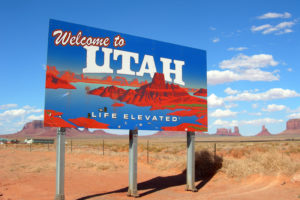 As new and cleaner energy options are deployed, our national energy portfolio is transforming faster than ever before. Facing changes occurring across our power, transportation, and resource systems, Utah has chosen an all-of-the-above state energy policy. Embracing energy diversity and focusing on efficient markets, technology, infrastructure, and new partnerships will create an energy economy that supports our state’s economic and environmental goals.
As new and cleaner energy options are deployed, our national energy portfolio is transforming faster than ever before. Facing changes occurring across our power, transportation, and resource systems, Utah has chosen an all-of-the-above state energy policy. Embracing energy diversity and focusing on efficient markets, technology, infrastructure, and new partnerships will create an energy economy that supports our state’s economic and environmental goals.
As discussed at Utah Governor Gary Herbert’s recent energy summit, the Governor’s Office of Energy Development (OED) has worked to advance Utah’s energy agenda with smart and innovative solutions. Among the OED’s significant initiatives are projects that invest in our rural communities, including a “first-of-its-kind” geothermal plant and a plan to create the world’s largest clean energy storage facility. We’re also driving new fuels to market with our support for cleaner Tier 3 fuels, which can reduce emissions by 80 percent. Additionally, Utah continues to be a place for unprecedented innovation in carbon capture and storage, with over $10 million in federal grants realized to date.
Our state’s approach to energy, including these and other initiatives, serves to address pressing environmental challenges while still creating economic opportunities and providing reliable and affordable energy to Utah residents. Our approach differs from that of other states, which have set ambitious goals to reach carbon neutrality by 2050. These approaches, while technically feasible, are not without their challenges. Meeting the requirements to become carbon neutral in a matter of decades is forecast to increase the cost of energy and to require massive investment in infrastructure projects that can often face a lack of local support. Additionally, while they do help, these plans do not do enough to fully address environmental concerns. Most of these efforts are focused on reducing emissions from the electricity sector and fail to take other more CO2-intensive sectors, such as transport, into account.
Each state must choose what makes the most sense given the specific set of challenges it faces. In Utah, we have chosen a diverse approach with goals to reduce carbon and other emissions to meet the environmental challenges we face, while maintaining affordability for our residents and driving economic results. We can be the standard for creating collaborative solutions that truly make for smart growth, clean air, and life elevated.
An all-renewables world and all-renewables portfolio is unaffordable. The U.S. Industrial heat demand is about twice total electricity demand. To electrify industry implies tripling the electricity grid. Wind and solar… Read more »
I did not see any reduction in carbon dioxide in Utah’s Tier three gasoline. If electric vehicles can be supplied by clean ( carbon-free) electricity it would accomplish all the… Read more »
Laura: Before making an Energy policy an agency of government should address an epistemological issue. The issue is of whether the argument that is made by each model that allegedly… Read more »
A balanced portfolio of generation is necessary to provide the energy needed to support our society and economy in the U.S. Using a combination of fossil, nuclear, and renewable sources… Read more »
While coal and other fossil fuels can help provide a stable supply of electricity they, unfortunately, do not lead to a stable climate, society or civilization. Because of past use… Read more »
What are the key challenges to a “renewables only” energy portfolio? What is required to overcome the challenges of an increasingly renewable electric system portfolio? Three primary issues are not… Read more »
Very few people believe in “renewables only” at least before 2050. A diverse energy system helps, but unless the full marginal costs of each option is explored it is not… Read more »
A carbon price, induced by a tax or cap-and-trade scheme, would provide a valuable guide to optimal diversification. Each technology, whether a demand-reducing technology like improvements in equipment efficiency or… Read more »
It is amazing to me how far the lobbyists of both political parties in the US have gone more and more out of touch with reality, since about when Roscoe… Read more »
Northern Chile is to solar what Norway is to hydro and Iceland is to geothermal–a unique local resource that exists nowhere else in the world. Chile has a high-elevation, dry… Read more »
There’s a lot of disagreement about the deployment of renewables, much less an all-renewables future that some maintain is the goal for which we should be striving. I won’t get… Read more »